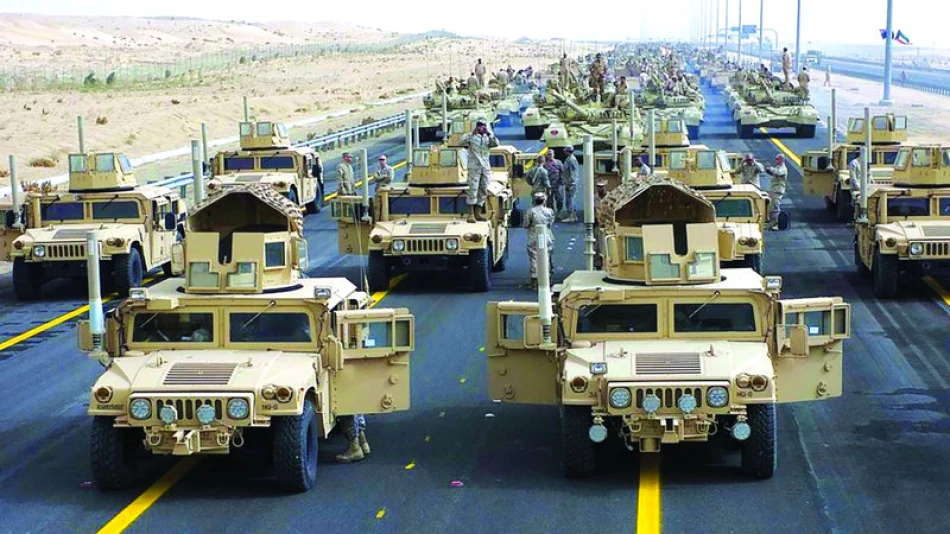
US Military Ranks 38th in Global Greenhouse Gas Emissions: Tackling Climate Impact
NATO's Military Spending Surge Creates Climate Crisis Contradiction
As NATO prepares for potential conflicts with China and Russia, the alliance's massive military spending increases are generating carbon emissions equivalent to entire nations—exposing a fundamental contradiction between security preparations and the existential threat of climate change. New analysis reveals the Pentagon alone will produce 26 million tons of greenhouse gases from recent budget increases, while NATO members plan to double their defense spending by 2035.
The Carbon Cost of Military Preparedness
According to analysis by the American Climate and Society Foundation, recent increases in Pentagon spending alone will generate approximately 26 million tons of greenhouse gases—equivalent to the annual carbon dioxide emissions from 68 gas-powered energy plants or the entire nation of Croatia.
With the Pentagon's budget rising to nearly $1 trillion—a 17% increase or $150 billion more than 2023 levels—total greenhouse gas emissions will reach a staggering 178 million tons of carbon dioxide. This would rank the U.S. military and its industrial apparatus as the world's 38th largest source of emissions, ahead of many developed nations.
The economic damage from these emissions is projected at $47 billion, including impacts on agriculture, human health, and property damage from extreme weather events, based on social cost calculations from the U.S. Environmental Protection Agency.
Hidden Military Emissions Beyond Pentagon Calculations
The true environmental impact will likely exceed these estimates, as the calculations don't include emissions from supplementary U.S. military funding, such as weapons transfers to Israel and Ukraine in recent years. The analysis also excludes emissions from actual armed conflicts, which can be substantial when they occur.
NATO's Doubling Down on Defense Spending
The climate impact extends far beyond U.S. military spending. NATO's 32 member countries committed at the June 2024 Hague summit to increase military and security spending from 2% to 5% of GDP by 2035—a dramatic escalation that reflects growing geopolitical tensions.
This commitment could see NATO military spending in Europe and Canada surge from approximately $500 billion today to $1.1 trillion by 2035. At that point, the combined defense budgets of the 32 allied nations would roughly equal the Pentagon's budget alone.
Every dollar or euro of this military spending, as NATO prepares for hypothetical wars with China, Russia, or other adversaries, carries both a climate cost and an opportunity cost for alternative investments.
Military Leaders Push for Greater Escalation
U.S. military commanders are advocating for even higher spending levels, often justified through threat inflation. At a recent military industry gathering in Wiesbaden, Germany, General Alexus G. Grynkewich, NATO's newly appointed Supreme Allied Commander, reinforced arguments for increased military expenditure.
Grynkewich urged member nations to prepare for the possibility of simultaneous wars launched by Russia and China in Europe and the Pacific, pointing to 2027 as a potential flashpoint, though admittedly speculative. "We'll need every piece of equipment, gear, and ammunition we can get to overcome that," he stated.
The Self-Fulfilling Prophecy of Military Buildup
Military leaders consistently cite increasing cooperation among adversaries to justify spending increases. However, evidence for this "axis of disruption" remains heterogeneous at best, primarily bilateral rather than a cohesive four-way alliance. This cooperation largely stems from shared frustrations with the U.S.-led international order and desires to counter Western dominance.
Ironically, systematic dismantling of international cooperation and persistent anti-China rhetoric may be contributing factors to this cooperation, risking transformation into a self-fulfilling prophecy.
The Climate Blind Spot in Military Planning
The fundamental flaw in current NATO strategic thinking is the failure to account for the relationship between military spending and climate emissions. Military conferences lack any "green corner" to remind NATO generals that climate crisis represents an existential threat to Earth—meaning it poses a danger to humanity's basic existence and the entire planet.
This willful blindness to planetary threats comes from the highest levels of command. In March 2024, Trump administration Defense Secretary Pete Hegseth wrote on X: "The Department of Defense doesn't care about climate change nonsense. We want to train for war."
The True Security Threat
This training and warfare will have catastrophic climate consequences, including diminishing freshwater resources, rising sea levels, and desertification of vast global regions. These changes will inevitably lead to political instability and increased forced migration—creating the very security challenges military planners claim to address.
The contradiction is stark: NATO claims resource constraints while simultaneously boasting about capabilities to stop Russian "mass and momentum" problems and attack Russian territory. Meanwhile, the U.S. operates approximately 870 overseas military bases and facilities—two and a half times more than all other nations combined. NATO countries collectively account for 55% of global military expenditure.
A Different Path Forward
NATO's contributions to climate crisis deterioration cannot be ignored. The alliance and participating nations must demonstrate transparency regarding their greenhouse gas emissions and commit seriously to reducing their carbon footprint.
Rather than escalating tensions with adversaries, senior NATO leaders should encourage political leaders to invest in diplomatic, non-military solutions to contemporary political crises.
As Climate and Society Foundation analysts suggest, increased military spending could be redirected toward demilitarized climate change measures, such as public transportation, renewable energy, or new green social housing—representing genuine investment in human security rather than preparation for planetary destruction.
The Investment Choice
The choice facing NATO nations is clear: continue pouring resources into military preparations that accelerate climate breakdown, or redirect those same resources toward addressing the actual existential threat facing humanity. The current trajectory suggests military establishments are choosing short-term geopolitical positioning over long-term planetary survival—a calculation that may prove catastrophically shortsighted.
 Sara Khaled
Sara Khaled







